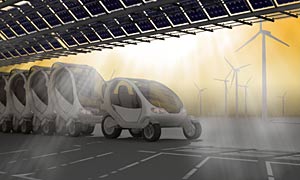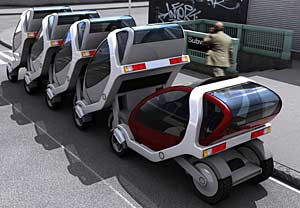William Mitchell is director of the MIT Design Laboratory, where he heads up the Smart Cities research group. The team is investigating how buildings and cities can respond more intelligently to their inhabitants. One of their recent projects is the CityCar Concept, a program involving stackable, electric vehicles that can be shared by urban residents. Hear Mitchell speak about “Technologies of Smart Sustainability” at the 2007 Innovation Conference.


Jenna M. McKnight: What will you be speaking about at the conference?
William Mitchell: I will be talking about the emerging idea of smart sustainability: the use of digital networking and embedded intelligence to enable buildings and cities to operate in more intelligent – and hence more energy-efficient— ways. I will discuss a number of practical examples, mostly from our Smart Cities group at the MIT Media Laboratory.
JM: In terms of urban infrastructure, what do you foresee as the next big thing?
WM: The most exciting thing on the immediate horizon is the emergence of intelligently coordinated self-organizing personal mobility systems for cities. The one-way rental bicycle-sharing system recently introduced in Paris is an excellent example of this. It provides a first-rate mobility service, it’s clean and green, and it depends completely on digital intelligence and networking for its effective management. San Francisco is currently exploring the possibility of a similar system. We will see a lot more of this sort of thing, not only with bicycles, but also with other vehicle types, such as electric bikes and scooters, and electric cars, of the sort that we have been working on in Smart Cities.
JM: What are you working on now?
WM: We are working on some smart electric vehicles, and on some digital public space projects in Zaragoza, Florence, and some other cities.
One of our most interesting new projects takes a new approach to intelligent gardens and landscapes. We have recognized that plants sense many things about their environments, and – though they don’t, of course, have nervous systems – they generate chemical and electrical signals in response. We're looking at plant-based sensor networks, constructed by capturing these signals. We think of it as the World Wide Wood.
JM: You once said that we shouldn't think of ourselves as “fixed, discrete individuals” but as nodes in a network. What does this mean for architects?
WM: Buildings are evolving into immobile robots. They have networks and embedded intelligence that increasingly closely approximate the nervous systems of organisms, they sense, and they respond intelligently.


Post a comment to this article
Report Abusive Comment